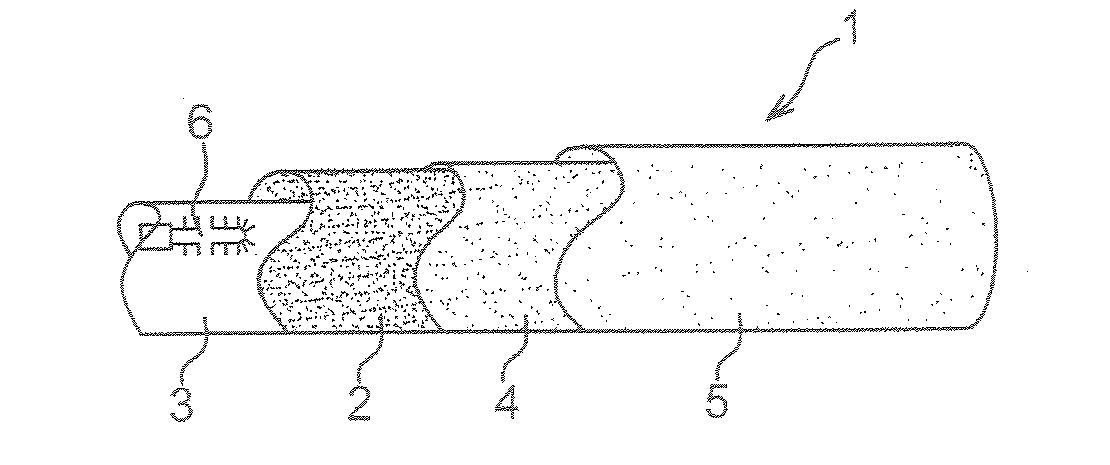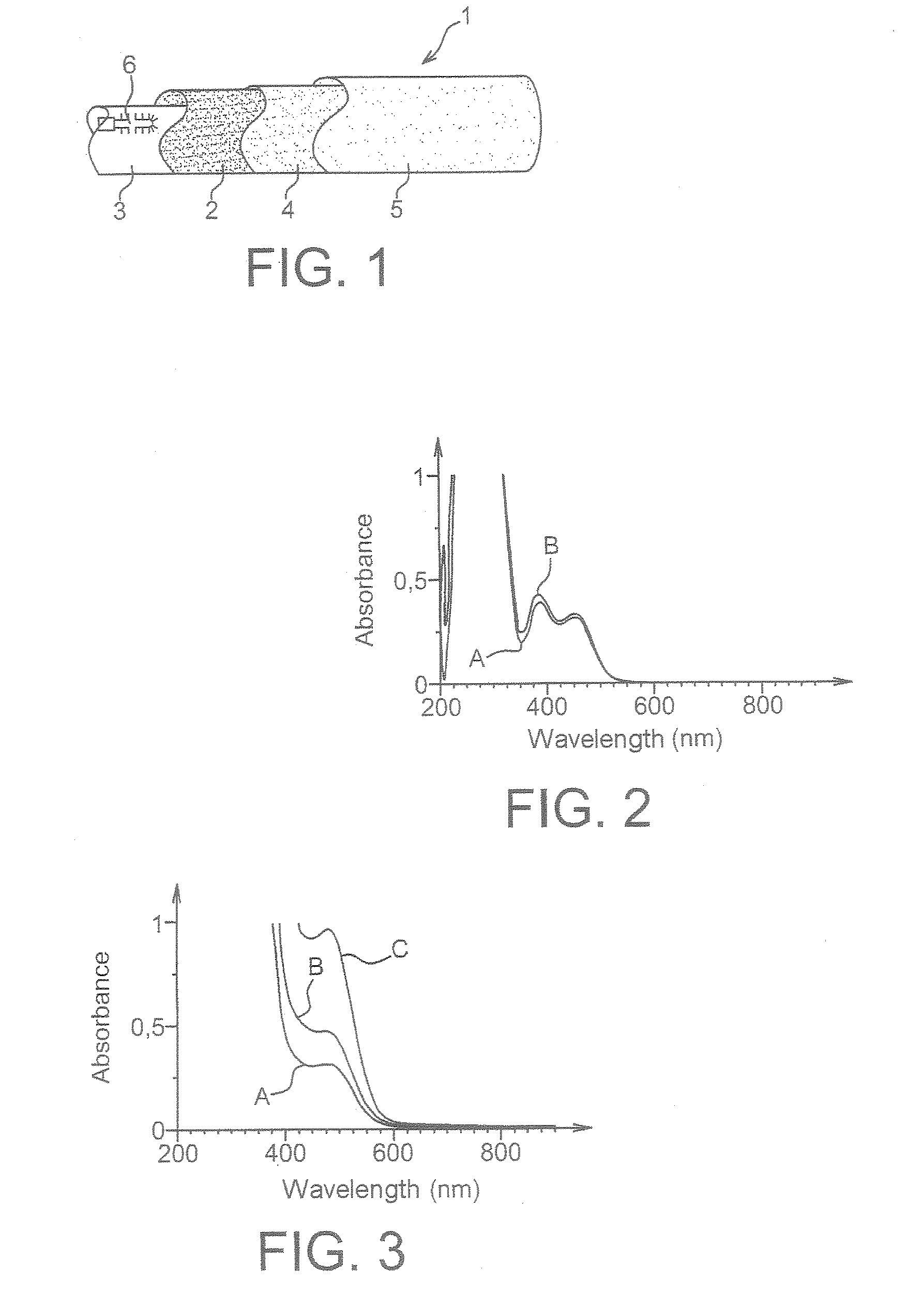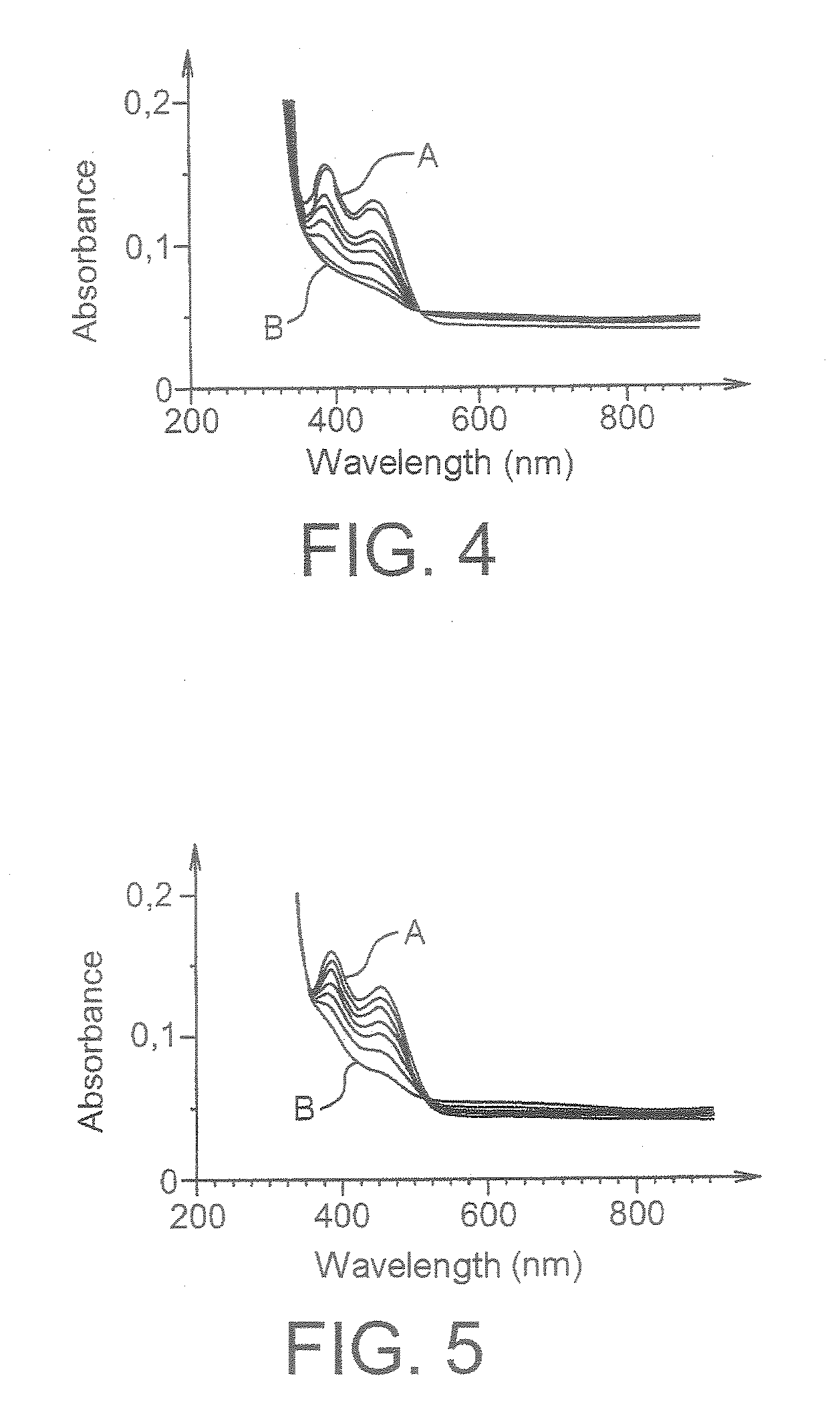Rigidification of structures to be deployed by inflating, particularly for use in space
a technology of rigidity and inflatability, applied in the field of flexible membranes, can solve the problems of limited number of polymers that can be used, the formation of gossamer structures, and the loss of shape of deployed structures
- Summary
- Abstract
- Description
- Claims
- Application Information
AI Technical Summary
Benefits of technology
Problems solved by technology
Method used
Image
Examples
example 1
Physico-Chemical Characteristics of Photoinitiators 1 and 2
[0072]a) Chemical Formulae and Molecular Weights:
[0073]The crude chemical formulae and the molecular weights of photoinitiators 1 and 2 were the following:
[0074]Photoinitiator 1: C14H17FePF6, namely a molecular weight of 385.85; and
[0075]Photoinitiator 2: C16H15FePF6, namely a molecular weight of 407.85.
[0076]b) UV-Visible Absorption Spectra:
[0077]The UV-visible absorption spectra of photoinitiators 1 and 2 were recorded from solutions of these compounds in three different solvents (dichloromethane, tetrahydrofuran and acetonitrile), using a SUPRASIL® quartz cuvette with an optical pathlength of 1 cm in a Varian Cary 50 Scan spectrometer.
[0078]For each solvent, three different photoinitiator concentrations (0.06% w / v, 0.1% w / v and 0.2% w / v) were tested.
[0079]FIG. 2 shows the spectra as obtained for the photoinitiator 1 in solution at the same concentration (0.2% w / v) in the three solvents tested, curve A corresponding to the...
example 2
Photolysis Under Visible Irradiation of Photoinitiators 1 and 2 in Epoxy Resins
[0084]In the presence of epoxide functional groups, the photolysis of iron-arene complex salts is expressed by a substitution of the arene group of these salts by three epoxide molecules resulting in the formation of an active species that induces the cationic polymerization of the epoxide molecules.
[0085]The reaction scheme below illustrates this mechanism by taking the photoinitiator 1 as the example of an iron-arene complex salt.
[0086]The active species, which is no longer only linked to a single aromatic ring, namely the cyclopentadienyl group, no longer absorbs in the visible range.
[0087]This results in a bleaching phenomenon of the iron-arene complex salt after photolysis.
[0088]The photolysis under visible irradiation of photoinitiators 1 and 2 in the epoxy resins has been studied by subjecting thin films of an epoxy resin (DER® 332 resin from Dow Plastics), to which 2% w / w of one of these photoinit...
example 3
Induction and Activation of the Polymerization of Epoxy Resins Comprising Photoinitiator 2
[0100]The induction and activation of the polymerization of epoxy resins comprising the photoinitiator 2 were studied by the following two series of tests:[0101]a first series consisting in subjecting thin films of an epoxy resin (DER® 330 from Dow Chemicals), to which 2% w / w of photoinitiator 2 had been added, to a visible irradiation of 15 or 30 minutes without insertion of an aromatic polyimide film between these films and the source of visible radiation, in then maintaining the films at 22° C., 50° C., 70° C., 90° C. or 110° C. for 10 or 40 minutes, and in determining the degree of conversion π of the epoxide functional groups of the resin at the end of the irradiation and at the end of the heat treatment respectively; and[0102]a second series consisting in subjecting films of this same resin, to which 0.5%, 1%, 2% and 4% w / w of photoinitiator 2 had been added, to a visible irradiation of 3...
PUM
| Property | Measurement | Unit |
|---|---|---|
| wavelengths | aaaaa | aaaaa |
| temperatures | aaaaa | aaaaa |
| temperatures | aaaaa | aaaaa |
Abstract
Description
Claims
Application Information
 Login to View More
Login to View More - R&D
- Intellectual Property
- Life Sciences
- Materials
- Tech Scout
- Unparalleled Data Quality
- Higher Quality Content
- 60% Fewer Hallucinations
Browse by: Latest US Patents, China's latest patents, Technical Efficacy Thesaurus, Application Domain, Technology Topic, Popular Technical Reports.
© 2025 PatSnap. All rights reserved.Legal|Privacy policy|Modern Slavery Act Transparency Statement|Sitemap|About US| Contact US: help@patsnap.com



